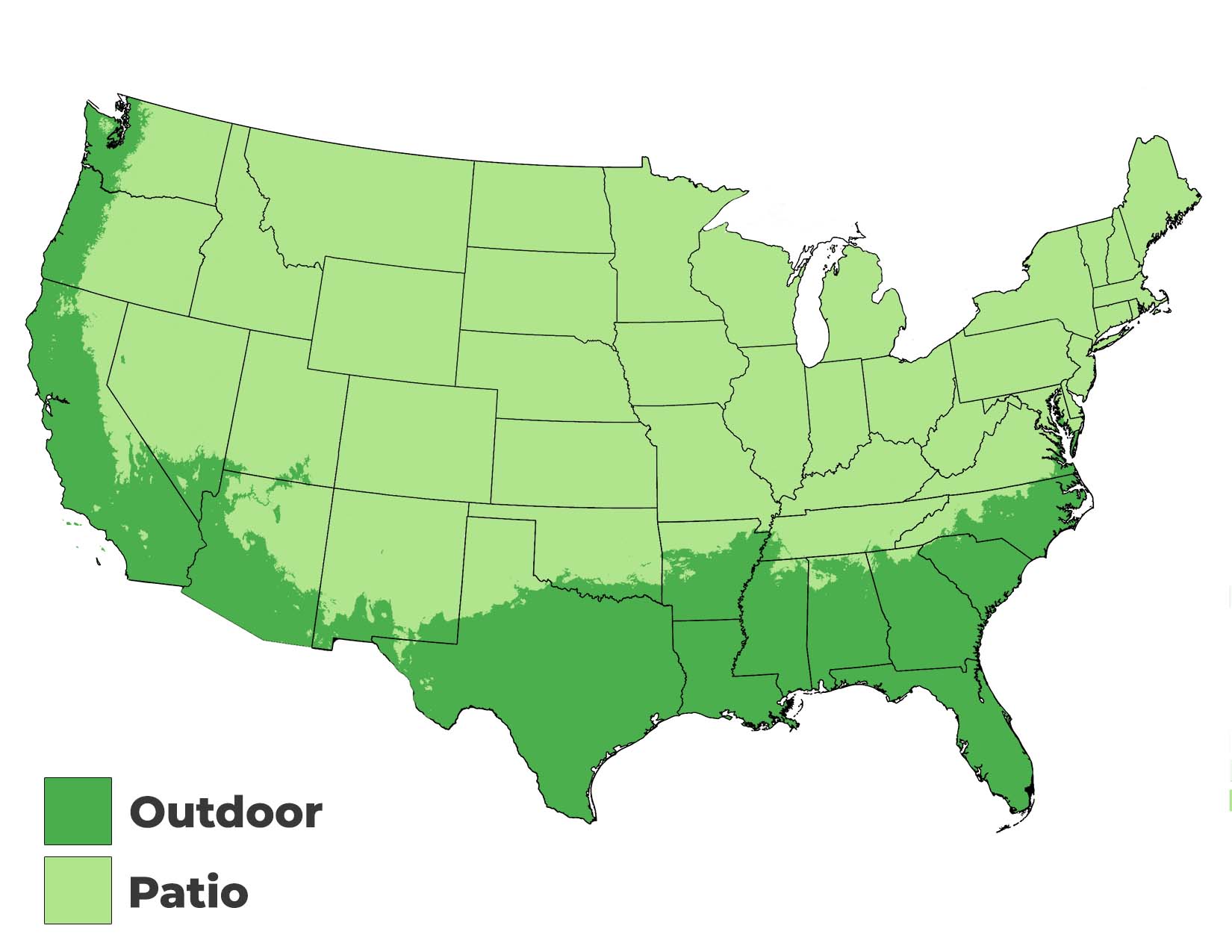Easy to Grow Hibiscus Flowers on Standard Tree Form
The Seminole Pink Hibiscus Tree is a classic heirloom favorite with long last blooms and evergreen foliage.
Huge tropical flowers bloom throughout the summer and fall growing seasons on this standard hibiscus tree. The single pink Hibiscus flower buds are medium pink or rose in color with a red center eye and yellow anthers. The saucer shaped flowers have ruffled edges and are approximately 4-6 inches in diameter making an eye catching statement.
The dark green foliage stays evergreen in tropical to subtropical climates to 32F. In cooler climates, it is considered deciduous or semi-evergreen as the green leaves may drop for winter. Commonly called Chinese Hibiscus, Rose Mallow, or botanically named Hibiscus rosa Sinensis.
The perennial hibiscus tree’s bright pink flowers will attract butterflies and hummingbirds to your garden. Use this tropical beauty to line sidewalks, create a statement or focal point as a specimen tree, or even plant in containers as a patio accent tree.
How to Care for Hibiscus Trees
Plant hibiscus trees across the United States in USDA plant hardiness zones 9-11. It can tolerate the spring, summer, and fall months in colder zones but it will need to be protected, or move the plant indoors near a sunny window for the cold weather. Growing hibiscus indoors as a house plant is not recommended all year long but a great option if you would like to bring the tropics indoors. Move the potted plant outdoors when the weather warms up in spring. The cold hardy hibiscus tree performs best with at least 6-8 hours of full sun but can tolerate partial shade.
Well draining soil or potting mix that is rich in organic matter is best for this evergreen shrub, and it does like conditions acidic. A slow release fertilizer applied at the root ball during early spring will encourage blooming and a thick layer of mulch will help to retain moisture. It does require more frequent watering during the summer months and to establish a strong root system. Keep the potting soil moist when watering your hibiscus especially if it’s a potted hibiscus variety.
If you experience yellowing leaves on your tropical hibiscus plant, look into the watering habits. Yellow leaves indicate too little or excess water as the perennial plant grows. Too much water can cause root rot and can kill the plant. Make sure to choose a pot with a drainage hole.
The pink tropical hibiscus tree height is up to 6-8 feet tall and 4-5 feet wide at maturity making it the perfect small tree. It has an upright growth habit and a fast growth rate. This pink hibiscus plant has already been pruned into a small tree from its flowering shrub form. If you are wondering how to prune the hibiscus tree, we have some good tips for you. Keep it simple and prune back any dead or diseased branches, shape the ornamental tree to your desired size, and make sure there is proper air circulation. The best time to prune is in late winter or early spring while the plant is dormant.
The plant does exhibit natural disease resistance and is deer resistant as well.
This ornamental flowering tree is low maintenance, heat tolerant, and a very popular type of hibiscus. The colorful blooms make perfect tropical planting or cut flowers!
To know how to properly care for your Hibiscus Tree in Winter visit our blog!
Shop the Seminole Pink Hibiscus Tree for sale.
Ask a question

Sunlight
Full Sun / Partial Shade
Flower Color
Pink
Foliage Color
Green
Mature Width 4-5 ft
Mature Height 6-8 ft
Growing Zones 8-11 Outdoor / 3-11 Patio




































